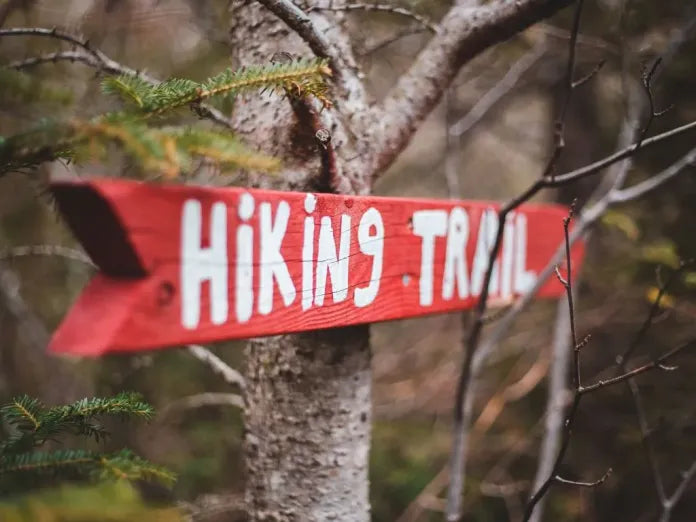
Europe's Most Scenic Hiking Trails for Nature Enthusiasts
Share
Europe is a treasure trove for hikers, offering everything from snow-capped mountains to coastal paths and ancient ruins. Whether you’re a seasoned trekker or just starting, the continent’s diverse landscapes promise unforgettable adventures. Let’s dive into some of the best hiking trails Europe has to offer and why they should be on every nature enthusiast’s bucket list!
Why Europe is a Hiker’s Paradise?
Europe is blessed with an incredibly varied landscape. You can walk through lush forests, climb steep mountain trails, or amble along the coast, all within a relatively short distance. Whether it’s the rugged Alps, serene fjords, or sprawling countryside, Europe’s natural diversity makes it a haven for hikers.
The Dolomites, Italy: A Hiker’s Dream
The Dolomites are a UNESCO World Heritage site and are renowned for their stunning beauty. The famous Alta Via trails provide a thrilling mix of landscapes, from dramatic cliffs to peaceful alpine meadows.
Tour du Mont Blanc, France, Switzerland, and Italy
One of Europe’s most famous hiking routes, the Tour du Mont Blanc takes you through three countries—France, Switzerland, and Italy. It’s a cultural and geographical melting pot, offering a diverse hiking experience.
West Highland Way, Scotland
For a quintessential Scottish hiking experience, the West Highland Way is unbeatable. This trail takes you through the heart of the Highlands, offering dramatic landscapes and a touch of Scottish history.
Read Also: Europe’s Most Breathtaking Natural Wonders
Kungsleden, Sweden: The King’s Trail
Kungsleden, or the “King’s Trail,” is Sweden’s premier long-distance hiking trail. It takes you through remote, untouched wilderness in northern Sweden, offering a sense of isolation and serenity.
Caminito del Rey, Spain: A Walk with a Thrill
Looking for a bit of adrenaline? The Caminito del Rey is known as one of the most dangerous hikes in the world, though it’s much safer today. The pathway clings to cliff faces high above a gorge, making for a thrilling trek.
The Lycian Way, Turkey
The Lycian Way is a long-distance trail along Turkey’s southern coast. What makes it unique is the combination of stunning coastal views and ancient Lycian ruins scattered along the way.
Laugavegur Trail, Iceland
Iceland’s Laugavegur Trail is like stepping onto another planet. Hikers traverse glaciers, volcanic deserts, hot springs, and lush valleys, all within a few days’ hike.
The diversity of landscapes on this trail is astounding. You can relax in natural hot springs one day and hike across a glacier the next.
The Rila Mountains, Bulgaria
The Rila Mountains are a hidden gem in Europe’s hiking scene. The highlight of this range is the Seven Rila Lakes, which are scattered across the mountains like sapphire jewels.
If you’re looking to escape the crowds, Bulgaria’s Rila Mountains offer peace, tranquility, and some of the most breathtaking scenery in Eastern Europe.
Read Also: 10 Best Places To Visit In Bulgaria
GR20, Corsica
The GR20 in Corsica is considered one of the most challenging hikes in Europe, with steep ascents and descents. It’s a test of endurance, but the rewards are well worth it.
This trail offers an incredible mix of mountain and coastal scenery. One minute you’re surrounded by towering peaks, and the next you’re gazing out at the Mediterranean.
Read Also: A Day in the Life of Europe’s Most Captivating Capitals
How to Prepare for Hiking in Europe
Good hiking boots, layers, and a reliable backpack are just the basics. You’ll also want to pack a first aid kit, navigation tools, and plenty of water.
Safety Tips for European Hikes
Always have a map, compass, or GPS device with you. Many trails in Europe are well-marked, but in remote areas, it’s easy to lose your way. Stick to designated paths, especially in mountainous regions where weather can change rapidly.
Europe’s weather can be unpredictable, particularly in mountainous areas like the Alps or the Scottish Highlands. Always check the forecast before heading out and be prepared for sudden changes—rain, wind, or even snow, depending on the season.
Sustainable Hiking Practices
It’s important to minimize your environmental impact while hiking. Always pack out what you pack in, and avoid disturbing wildlife. Stay on the trails to prevent erosion and damage to fragile ecosystems.
Consider staying in locally-owned accommodations and dining in small, family-run restaurants to support the communities around these hiking trails. This way, you’re helping preserve not just nature, but also local cultures and economies.
Best Time to Hike Europe’s Trails
The warmer months from May to September are the most popular for hiking in Europe. The trails are clear of snow, the weather is generally pleasant, and the scenery is in full bloom. If you’re hiking in high-altitude areas like the Alps, this is the best time to go.
For those looking to avoid crowds, fall and winter hikes can offer a different kind of beauty. Autumn colors in forests, snow-dusted peaks, and quieter trails can make for a peaceful and unique hiking experience, though be mindful of the more challenging weather conditions.

Conclusion
Hiking in Europe is more than just a physical activity—it’s a way to connect with the continent’s rich and diverse landscapes. From the rugged peaks of the Dolomites to the serene shores of the Lycian Way, each trail offers its own unique charm and challenges. Whether you’re an experienced hiker or just starting out, Europe has a path for every type of adventurer. So pack your gear, lace up your boots, and get ready to explore some of the most scenic hiking trails the world has to offer.
See more: The Ultimate Guide to Europe’s Most Beautiful Seaside Towns
